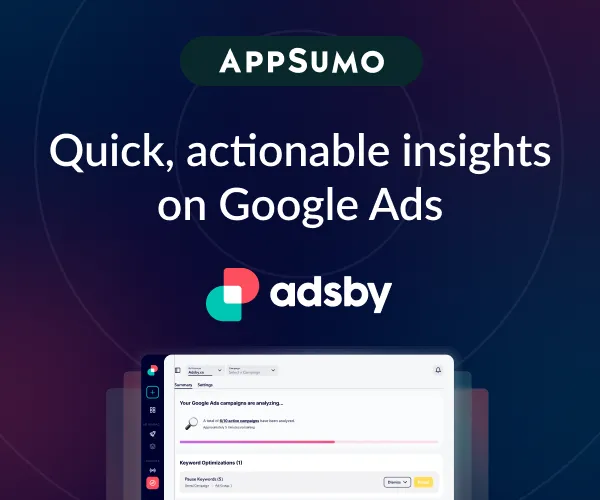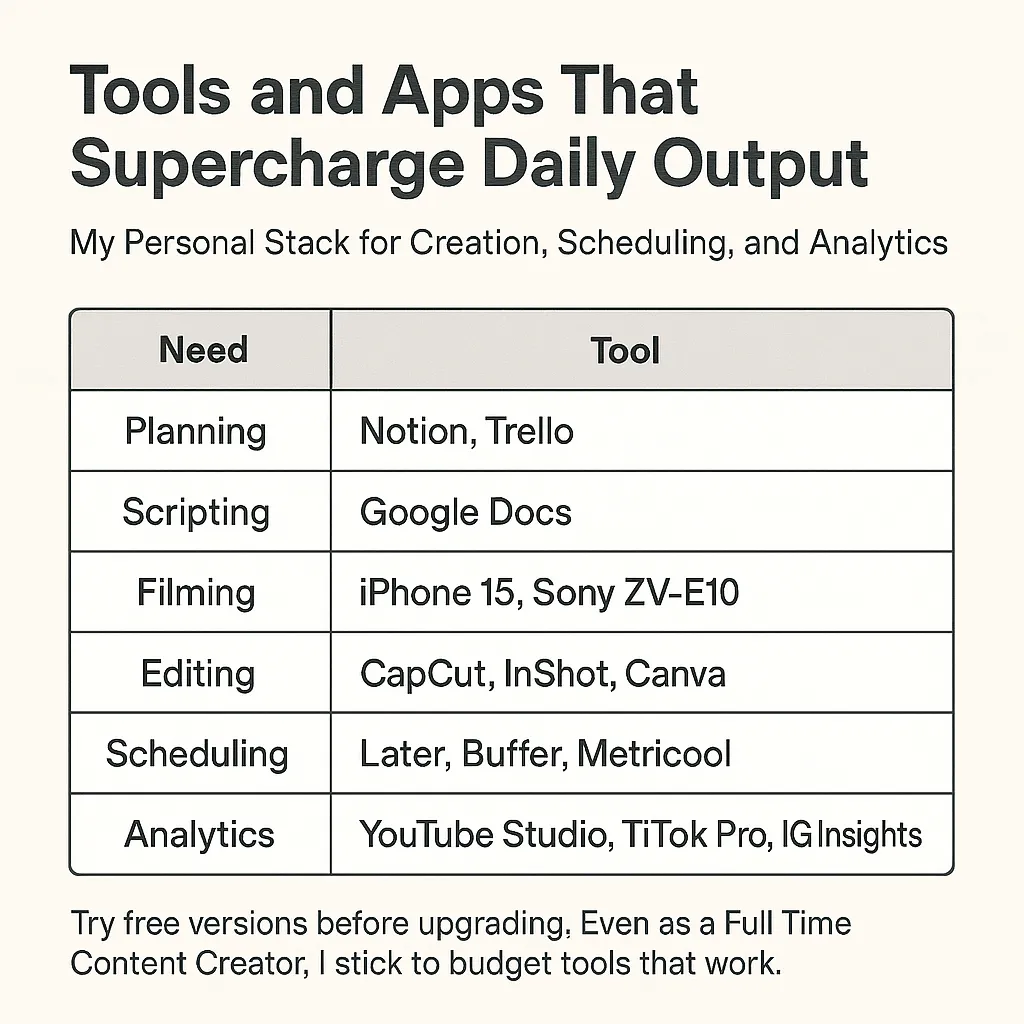
Unlock Hidden SEO Gold with This Long-Tail Keyword Tool
Have you ever tried screaming into a crowded room to get someone’s attention? That’s what using broad keywords feels like. But long-tail keywords? They’re like walking up to someone, whispering the perfect pick-up line, and watching their eyes light up. Welcome to the VIP lounge of SEO, where a long-tail keyword generator is your wingman, and success is just a phrase away.
Unlock Hidden SEO Gold with This Long-Tail Keyword Tool
Alright, Let’s Talk Long-Tail Keywords: The Secret Sauce of SEO Success
What Are Long-Tail Keywords, and Why Should You Care?
How to Use a Long-Tail Keyword Generator Like a Pro
How to Know If Your Long-Tail Keyword is a Winner
1. Search Intent: What Are They Looking For?
2. Competition: Can You Stand Out?
3. Search Volume: Is Anyone Searching?
4. Keyword Difficulty: Is It a Steep Climb?
Putting It All Together: Your Long-Tail Keyword Checklist
Where to Stash These Keywords on Your Website
1. Title and Meta Description: The Front Door of Your SEO
2. Headings (H1, H2, H3): Google’s Favorite Snack
3. Body Text: Where the Magic Happens
4. Alt Text and URLs: SEO in the Details
Examples of Long-Tail Keywords in Action
6 Stats That Prove Long-Tail Keywords Are Legit
1. 70% of All Searches Are Long-Tail Keywords (Ahrefs)
2. Pages Targeting Long-Tail Keywords See a 2.5x Higher Conversion Rate (Moz)
3. 55% of Marketers Swear by Long-Tail Keywords to Attract Qualified Leads (HubSpot)
4. Sites Focusing on Long-Tail Keywords See a 20% Traffic Boost (Search Engine Journal)
5. Less Than 30% of Long-Tail Keywords Face Heavy Competition (WordStream)
6. Pages Optimized for Long-Tail Keywords Rank 11 Spots Higher on Average (Backlinko)
Content Planning with Long-Tail Keywords: Building an Effective Content Calendar
Step 1: Use a Long-Tail Keyword Generator to Find Content Ideas
Step 2: Map Keywords to Content Types
Step 3: Build a Content Calendar with Long-Tail Keywords
Step 4: Optimize Content Using Semantic Keywords
Step 5: Monitor Performance and Adjust
Industry-Specific Keyword Ideas: Tailored Long-Tail Keywords for Your Niche
Travel Industry: Inspire Wanderlust
E-Commerce: Drive Sales and Conversions
Tech Industry: Stay Ahead of the Curve
Fitness Industry: Motivate and Engage
Education Industry: Inform and Empower
How to Use These Keywords in Content Planning
Common Mistakes and How to Avoid Them: Mastering Long-Tail Keyword Usage
Avoiding Pitfalls of Long Tail Keywords
3. Focusing Only on High-Competition Keywords
4. Not Optimizing Across the Page
5. Relying on One Keyword Per Page
6. Forgetting to Update and Refresh Keywords

Alright, Let’s Talk Long-Tail Keywords: The Secret Sauce of SEO Success
Let’s stop pretending that tossing random words into your SEO strategy is enough to impress Google. It’s not 2010 anymore. The real magic lies in those ultra-specific, quirky, “best-dog-groomers-in-Brooklyn-for-poodles-with-attitude” kinds of keywords. Enter the hero of this story: long-tail keywords. These little powerhouses drive the right traffic—people who are ready to click, buy, and fall in love with your content. And with a long-tail keyword generator, you don’t just aim for the stars—you land on the front page.
What Are Long-Tail Keywords, and Why Should You Care?
Picture this: you’re looking for sushi at 2 a.m. in downtown Chicago. Are you searching “sushi” or typing “best late-night sushi in downtown Chicago”? Yep, the second one. That’s a long-tail keyword. These babies are more specific, less competitive, and tailored to people who know exactly what they want.
Here’s why they’re a game-changer:
Higher Conversions: They attract users ready to act, whether it’s clicking “Buy Now” or signing up for your newsletter.
Lower Competition: Big brands duke it out over broad terms, leaving you free to dominate the long-tail landscape.
Better Rankings: Search engines love specificity, and so does your audience.
Relevant Traffic: Long-tail keywords bring visitors who are genuinely interested in your content or products.
If you’re not using a long-tail keyword generator, you’re leaving cash on the table. No pressure, but seriously, get on it.
How to Use a Long-Tail Keyword Generator Like a Pro
Alright, let’s dig in. Using a long-tail keyword generator is easier than finding a cat meme on the internet (and almost as satisfying). Here’s how you do it:
Pick Your Tool: Fancy options like SEMrush, Ahrefs, and AnswerThePublic will have you swimming in ideas. Just type in a general term and watch the magic happen.
Check the Stats: Pay attention to search volume and competition. Look for keywords with decent traffic but low competition. Think of it as finding the least crowded coffee shop with the best lattes.
Focus on Questions: Phrases like “how to groom a Maine Coon” or “Best laptops for graphic design students” are SEO gold. They show clear intent, and intent equals conversions.
Curate Your List: Save your top picks like you’re creating a Spotify playlist for your site. These keywords are your jams.
How to Know If Your Long-Tail Keyword is a Winner
Not all long-tail keywords are created equal. Some are like gold mines, driving targeted traffic to your site, while others might as well be tumbleweeds in the desert. The key is knowing how to separate the gems from the duds. Let’s break down the criteria for picking long-tail keywords that work.
1. Search Intent: What Are They Looking For?
Search intent is the north star of keyword selection. It’s all about aligning your content with what the user is searching for. Does your long-tail keyword match the purpose of your page? If someone searches for “how to build a bookshelf,” they’re looking for a guide, not a product page. On the flip side, “buy modern bookshelves online” screams e-commerce.
Example:
Good Match: “How to grow indoor succulents” for a blog post explaining plant care.
Bad Match: “Buy succulents cheap” for the same blog post—it’s irrelevant to the reader’s intent.
Pro Tip: Use Google’s search results to analyze the top-ranking pages for your keyword. If the content type (e.g., blog, product page, video) matches your plan, you’re on the right track.
2. Competition: Can You Stand Out?
Keyword competition is like walking into a crowded party—sometimes it’s better to find a quieter room where you can shine. If the top search results for your keyword are dominated by big brands, major publications, or established blogs, it’s going to be an uphill battle.
How to Check Competition:
Do a quick Google search for your keyword.
Evaluate the first page. If it’s filled with smaller blogs or niche sites, you’ve got a chance.
Tools like SEMrush or Ahrefs can also help identify competitive keywords.
Example:
High Competition: “Best smartphones” (good luck beating tech giants).
Low Competition: “Best smartphones for senior citizens with large screens.”
Pro Tip: Look for “content gaps” where competitors haven’t fully addressed a topic or question. That’s your opportunity.
3. Search Volume: Is Anyone Searching?

A long-tail keyword might sound great, but if no one’s searching for it, it won’t drive traffic. While long-tail keywords naturally have lower search volume than broader terms, they should still have some level of interest.
How to Check Search Volume:
Use keyword tools like Google Keyword Planner, Ahrefs, or Ubersuggest to see monthly search volume.
Aim for keywords with consistent but modest search numbers, like 100–1,000 monthly searches.
Example:
Good Volume: “How to clean hardwood floors with vinegar” (specific, with steady interest).
Poor Volume: “How to clean wooden floors naturally in July” (too niche and seasonal).
Pro Tip: If a keyword has low volume but aligns perfectly with your audience, it might still be worth targeting. Quality over quantity, right?
4. Keyword Difficulty: Is It a Steep Climb?
Keyword difficulty (KD) measures how hard it is to rank for a particular term. Think of it as the keyword’s weightlifting class—some are lightweights, while others are heavyweights. Tools like Ahrefs assign a KD score to help you gauge the effort required.
How to Choose:
Look for keywords with a KD score in the low to moderate range (e.g., 10–40).
Avoid high-KD keywords unless you have an established site with strong domain authority.
Example:
Easy Win: “Best gardening gloves for women” with a KD of 20.
Herculean Task: “Gardening gloves” with a KD of 80.
Pro Tip: Pair low-difficulty keywords with great content to maximize your chances of ranking quickly.
Putting It All Together: Your Long-Tail Keyword Checklist
To know if a long-tail keyword is a winner, ask yourself these questions:
Does it match the search intent?
Make sure the keyword aligns with what users want.Is the competition manageable?
Aim for keywords where smaller players dominate the results.Does it have a decent search volume?
Even a modest number of searches can drive valuable traffic.Is the keyword difficulty achievable?
Look for terms you can realistically rank for without breaking a sweat.

Where to Stash These Keywords on Your Website
Alright, you’ve done the hard work. You’ve got your list of long-tail keywords, and now you’re ready to sprinkle them across your website like SEO fairy dust. But here’s the thing: knowing where to place them is just as crucial as picking the right ones. Strategically positioning your keywords can be the difference between a top-ranking page and one that never sees the light of day. Let’s break down the best spots to stash those long-tail gems.
1. Title and Meta Description: The Front Door of Your SEO
Think of your title and meta description as your website’s first impression. This is what users see in search engine results, so it needs to shine. Your long-tail keyword should take center stage here, clearly signaling to search engines (and humans) what your page is about.
For example, if your keyword is “how to groom a poodle,” your title might be:
“How to Groom a Poodle: Step-by-Step Tips for Perfect Dog Care”
Your meta description could read:
“Learn how to groom a poodle with our easy, detailed guide. Perfect for beginners and seasoned pet owners.”
Pro Tip: Keep your title under 60 characters and your meta description under 160 characters to ensure they display properly in search results.
2. Headings (H1, H2, H3): Google’s Favorite Snack
Google loves structure, and your headings are the breadcrumbs that lead search engines and readers through your content. Incorporating your long-tail keywords into headings helps search engines understand your page’s main topics and shows users that your content is relevant.
Let’s say your long-tail keyword is “best laptops for college students under $500.” Your headings might look like this:
H1: Best Laptops for College Students Under $500 in 2025
H2: Top Features to Look for in Affordable Laptops
H3: Our Picks for the Best Budget-Friendly Laptops
Pro Tip: Don’t overdo it. Use the keyword naturally, and make sure your headings remain engaging and informative.
3. Body Text: Where the Magic Happens
The body of your content is where your keywords can work their SEO magic. Use your long-tail keyword naturally throughout the article, especially in these key spots:
The First 100 Words: This signals relevance right off the bat.
Throughout the Content: Aim for a keyword density of 1-2%—enough to show focus without sounding robotic.
In the Conclusion: Reinforce the main point of your content while naturally using the keyword.
For example, if your keyword is “best eco-friendly cleaning products,” your opening paragraph might say:
"If you’re looking for the best eco-friendly cleaning products that are effective and safe for your family, you’ve come to the right place. In this guide, we’ll explore top picks that are good for the planet and your wallet."
Pro Tip: Use synonyms and related terms to avoid keyword stuffing while still reinforcing your topic.
4. Alt Text and URLs: SEO in the Details
Images and URLs are often overlooked in SEO, but they’re prime real estate for your long-tail keywords. Here’s how to use them effectively:
Alt Text: This describes an image to search engines and visually impaired users. For an article on “how to bake gluten-free bread,” your alt text might read:
“Freshly baked gluten-free bread on a wooden cutting board.”URLs: Keep your URLs short, descriptive, and keyword-rich. Instead of:
www.example.com/page1234
Go for:
www.example.com/best-laptops-under-500
Pro Tip: Always use hyphens to separate words in URLs for better readability and SEO impact.

How These Placements Drive Results
Using your long-tail keywords in these critical areas signals to search engines that your content is authoritative and relevant. Here’s what happens when you optimize these spots:
Title and Meta Description: Boost click-through rates by showing searchers exactly what they’ll find on your page.
Headings: Improve readability and help your content rank for related queries.
Body Text: Build authority on your topic and keep visitors engaged.
Alt Text and URLs: Enhance accessibility while giving search engines extra context.
Examples of Long-Tail Keywords in Action
Let’s see these bad boys in the wild:
Keyword: “Best budget-friendly beach resorts in Florida”
Use it in: A travel blog listing affordable beach vacations.
Keyword: “How to cook vegan mac and cheese”
Use it in A recipe post or YouTube tutorial.
Keyword: “Easy at-home workouts for beginners”
Use it in: A fitness site offering free guides.
6 Stats That Prove Long-Tail Keywords Are Legit
Numbers don’t lie, and when it comes to long-tail keywords, the stats speak volumes about their effectiveness. These data points not only highlight the value of using long-tail keywords but also provide a roadmap for leveraging them to improve your SEO strategy. Let’s dive deeper into each of these stats and uncover why long-tail keywords are a non-negotiable part of your digital marketing arsenal.
1. 70% of All Searches Are Long-Tail Keywords (Ahrefs)
This stat alone should make you sit up and take notice. A whopping 70% of all searches are long-tail keywords, which means people are actively searching for specific, detailed information. For example, instead of searching for “laptops,” users are typing queries like “best laptops for graphic designers under $1,000.”
Why does this matter? Because it shows that audiences want precision. By targeting long-tail keywords, you’re addressing specific needs and questions, making your content more relevant to searchers. Plus, with 70% of the pie up for grabs, you have plenty of opportunities to create content that caters to these queries.
Pro Tip: Use tools like AnswerThePublic or Google’s autocomplete suggestions to identify the long-tail keywords your audience is searching for.
2. Pages Targeting Long-Tail Keywords See a 2.5x Higher Conversion Rate (Moz)
Higher conversion rates mean more people taking action—whether it’s purchasing a product, signing up for a newsletter, or downloading a resource. Long-tail keywords naturally align with searcher intent. Someone searching “how to bake sourdough bread at home” is likely looking for a recipe or tutorial, making it easier to guide them toward relevant actions, like buying a sourdough starter kit or signing up for a baking class.
By focusing on these keywords, you’re not just increasing traffic—you’re increasing qualified traffic. These are visitors who already have a clear goal in mind, making them more likely to convert.
Pro Tip: Include clear calls to action (CTAs) tailored to your long-tail keywords. For example, a page targeting “how to save money on wedding decor” might have a CTA for a free budget planner download.
3. 55% of Marketers Swear by Long-Tail Keywords to Attract Qualified Leads (HubSpot)
Marketers know the value of a good lead, and more than half of them rely on long-tail keywords to attract these high-quality visitors. Why? Because long-tail keywords tend to filter out the noise. They target users who know what they want, making it easier to match them with the right solution.
For instance, a user searching “best fitness tracker for swimming under $150” is far more likely to purchase someone simply typing “fitness tracker.” The specificity helps you craft content and offers that directly address their needs.
Pro Tip: Pair your long-tail keyword strategy with customer personas. Understanding your audience’s pain points and goals will help you craft keywords that resonate and drive leads.

4. Sites Focusing on Long-Tail Keywords See a 20% Traffic Boost (Search Engine Journal)
Who doesn’t want a 20% boost in organic traffic? Focusing on long-tail keywords can help you attract visitors who might otherwise miss your site entirely. These keywords often have less competition, making it easier to rank higher in search results.
Take a niche blog about sustainable living, instead of targeting broad terms like “eco-friendly products,” focusing on “best eco-friendly cleaning products for small apartments” can drive targeted traffic from users searching for exactly that information.
Pro Tip: Optimize for multiple long-tail keywords in a single piece of content by using related phrases. For example, a blog post on “affordable eco-friendly cleaning products” can also target “best green cleaning products on a budget.”
5. Less Than 30% of Long-Tail Keywords Face Heavy Competition (WordStream)
Here’s the sweet spot for smaller businesses and niche sites. Unlike short keywords that major brands dominate, long-tail keywords often fly under the radar. With fewer players in the game, it’s easier for smaller websites to rank high and get noticed.
For instance, a small photography business might struggle to rank for “wedding photography,” but “wedding photography tips for beginners” is a long-tail keyword with far less competition—and plenty of potential traffic.
Pro Tip: Use keyword difficulty scores from tools like SEMrush or Ahrefs to identify low-competition long-tail keywords that align with your content.
6. Pages Optimized for Long-Tail Keywords Rank 11 Spots Higher on Average (Backlinko)
In the world of SEO, ranking higher is the name of the game. Pages optimized for long-tail keywords have a major advantage, often jumping 11 spots higher than their counterparts targeting broad keywords. That’s the difference between being buried on page two of Google and landing at the top of page one.
Why does this happen? Search engines value relevance, and long-tail keywords provide it in spades. They tell search engines exactly what your content is about, making it more likely to match user intent and rank well.
Pro Tip: Incorporate your long-tail keywords into title tags, meta descriptions, and headings to signal relevance to search engines.
Content Planning with Long-Tail Keywords: Building an Effective Content Calendar
Using a long-tail keyword generator to develop a content calendar is one of the smartest moves you can make for your SEO strategy. Long-tail keywords help you target specific audiences, align with search intent, and boost your rankings without competing head-to-head with big brands. But here’s the catch: to maximize their power, you need a solid plan. This guide shows you how to use a long-tail keyword generator and semantic keywords to create a content calendar that drives results.
Step 1: Use a Long-Tail Keyword Generator to Find Content Ideas
Every great content plan starts with thorough keyword research. A long-tail keyword generator is your go-to tool for uncovering specific, actionable phrases that align with your audience’s needs.
Choose the Right Generator: Popular tools like Ahrefs, SEMrush, and AnswerThePublic are fantastic options. Just plug in a broad keyword (like “fitness tips”), and they’ll provide hundreds of semantic keywords and long-tail variations.
Analyze Keyword Metrics: Look for keywords with:
Moderate search volume (e.g., 100–1,000 monthly searches).
Low competition to improve ranking chances.
High intent alignment, ensuring the keyword matches user goals.
Example: If you enter “healthy recipes” into a long-tail keyword generator, you might get results like:
“quick low-carb dinner ideas”
“Meal prep for busy professionals”
“How to make vegan pancakes”
Step 2: Map Keywords to Content Types
Once you have your list of long-tail keywords, the next step is mapping them to the right content format. Here’s how to pair keywords with blog posts, videos, and landing pages:
Blog Posts:
Perfect for answering questions or providing in-depth explanations.Keyword: “How to bake gluten-free bread”
Content Idea: A step-by-step guide with pro tips and ingredient substitutions.
Videos:
Great for tutorials, demonstrations, or engaging visual content.Keyword: “best workouts for beginners at home”
Content Idea: A short workout routine video with commentary.
Landing Pages:
Ideal for high-intent, transactional keywords.Keyword: “affordable running shoes under $50”
Content Idea: A product review page with CTAs to purchase.
Using a long-tail keyword generator ensures your content aligns with these formats, maximizing its impact and relevance.
Step 3: Build a Content Calendar with Long-Tail Keywords
Now, it’s time to organize your ideas into a clear, actionable content calendar. A long-tail keyword generator simplifies this process by providing a steady stream of keyword-rich ideas.
Plan Themes by Month: Group related keywords to create thematic content. For example:
January: “Healthy living” (keywords: “low-sugar snacks,” “quick healthy lunches”).
February: “Fitness hacks” (keywords: “how to start running,” “best fitness trackers under $100”).
Schedule Content Formats: Rotate between blogs, videos, and landing pages to keep your strategy diverse.
Assign Publishing Dates: Use tools like Trello or Google Calendar to schedule content. For example:
Week 1: Publish a blog post targeting “how to grow succulents indoors.”
Week 2: Release a video tutorial for “easy succulent care tips.”
Step 4: Optimize Content Using Semantic Keywords
To truly maximize the potential of your long-tail keywords, sprinkle in semantic keywords—related terms that reinforce your topic. These keywords not only boost your SEO but also improve readability and user experience.
Where to Use Semantic Keywords:
Titles: Incorporate long-tail and related keywords.
Subheadings: Break up content with semantic-rich headers.
Body Text: Weave in related terms naturally.
Example: If your main keyword is “how to plan a vegan meal,” semantic keywords might include:
“Plant-based recipes”
“vegan grocery list”
“meal prep ideas for vegans”
Step 5: Monitor Performance and Adjust
A successful content calendar isn’t static. Use data and analytics to refine your strategy over time.
Track Results: Tools like Google Analytics help you monitor traffic, engagement, and conversions for pages created using long-tail keyword generators.
Update Content: Refresh high-performing pieces with updated data and keywords.
Refine Keywords: As you gather insights, use your long-tail keyword generator to find even more specific phrases and trends.

Industry-Specific Keyword Ideas: Tailored Long-Tail Keywords for Your Niche
Long-tail keywords aren’t just for general use—they’re the secret weapon for industry-specific SEO. Whether you’re in travel, e-commerce, tech, fitness, or education, the right long-tail keywords can help you reach your audience with laser-like precision. By using a long-tail keyword generator, you can find these niche-specific phrases quickly and effectively. Let’s dive into some keyword suggestions and strategies tailored to popular industries.
Travel Industry: Inspire Wanderlust
Travelers often search with specific intentions, like booking flights, finding accommodations, or exploring unique experiences. Long-tail keywords help you target these queries and connect with adventure seekers.
Informational Keywords:
“Best time to visit Paris for cherry blossoms”
“Top 10 solo travel destinations in Asia”
“How to pack for a two-week road trip”
Transactional Keywords:
“Book budget-friendly safari tours in Kenya”
“Luxury beach resorts in the Maldives with all-inclusive packages”
“Cheap flights from New York to Tokyo in October”
Navigational Keywords:
“Airbnb alternatives for family vacations”
“Expedia reviews for last-minute travel deals”
Pro Tip: Use a long-tail keyword generator like AnswerThePublic to uncover unique travel-related questions and phrases.
E-Commerce: Drive Sales and Conversions
E-commerce thrives on targeting users ready to make a purchase. Long-tail keywords allow you to stand out in a crowded market and cater to niche buyer needs.
Informational Keywords:
“How to choose the best laptop for gaming”
“Sustainable fashion brands for workwear”
“Benefits of memory foam mattresses”
Transactional Keywords:
“Buy waterproof hiking boots for men size 11”
“Discounted smartwatches for under $200”
“Handmade silver jewelry with free shipping”
Navigational Keywords:
“Amazon best-sellers for home organization”
“Etsy stores for unique wedding gifts”
Pro Tip: Use tools like SEMrush to identify product-related long-tail keywords and map them to specific product pages.

Tech Industry: Stay Ahead of the Curve
The tech industry demands precision. Users often search for specific solutions, tutorials, or product comparisons. Long-tail keywords help you target these highly motivated searchers.
Informational Keywords:
“How to set up a home server with Raspberry Pi”
“Best apps for managing remote teams”
“How to boost Wi-Fi speed in large houses”
Transactional Keywords:
“Buy refurbished MacBooks with warranty”
“Best noise-canceling headphones for travel”
“Affordable ergonomic chairs for programmers”
Navigational Keywords:
“Logitech MX Master 3 reviews for video editing”
“Dell Inspiron vs HP Pavilion for college students”
Pro Tip: A long-tail keyword generator can help you identify trending searches in tech, making it easier to create timely and relevant content.
Fitness Industry: Motivate and Engage
Fitness enthusiasts often search for tips, equipment, or workout plans tailored to their goals. Long-tail keywords let you target users at different fitness levels and with varying interests.
Informational Keywords:
“How to start a strength training program at home”
“Benefits of yoga for seniors with arthritis”
“What to eat before a 5K race”
Transactional Keywords:
“Buy resistance bands with door anchors”
“Best protein powder for weight loss under $50”
“Affordable gym memberships near me”
Navigational Keywords:
“Peloton bike alternatives for budget-conscious buyers”
“Nike running shoes for flat feet reviews”
Pro Tip: Use tools like Ubersuggest to find fitness-related long-tail keywords that match popular trends and search behavior.
Education Industry: Inform and Empower
Education-related searches often involve tutorials, courses, or resources. Long-tail keywords help you connect with learners, educators, and parents searching for tailored solutions.
Informational Keywords:
“How to prepare for SAT math section”
“Top coding boot camps for beginners in 2025”
“Benefits of Montessori education for toddlers”
Transactional Keywords:
“Buy online science tutoring packages for middle school”
“Best laptops for college students under $1,000”
“Affordable homeschooling curriculums with lesson plans”
Navigational Keywords:
“Khan Academy SAT prep reviews”
“Coursera vs. Udemy for data science courses”
Pro Tip: A long-tail keyword generator can help you discover high-value educational phrases by analyzing popular queries in your niche.
How to Use These Keywords in Content Planning
Blog Posts:
Use informational keywords to create guides, tutorials, and how-to articles tailored to your industry.Landing Pages:
Target transactional keywords to optimize pages for products, services, or sign-ups.Videos:
Leverage keywords for visual content, such as demonstrations, reviews, or explainer videos.Social Media Content:
Use these keywords as inspiration for posts that drive engagement and direct users to your site.
Common Mistakes and How to Avoid Them: Mastering Long-Tail Keyword Usage
Using long-tail keywords can revolutionize your SEO strategy, but only if you do it right. Too often, marketers and content creators fall into traps that can hurt their rankings instead of boosting them. Let’s break down the most common mistakes when using long-tail keywords and how to avoid them. And yes, we'll show you how a long-tail keyword generator can help you dodge these pitfalls and perfect your strategy.
Avoiding Pitfalls of Long Tail Keywords
Overstuffing Keywords
One of the most common mistakes is keyword stuffing—cramming your content with long-tail keywords to the point where it feels unnatural. While it might seem like a quick way to boost SEO, search engines are smarter than that. They penalize overstuffed content, and readers are turned off by clunky, repetitive writing.
Example of Overstuffing:
"A long-tail keyword generator is essential. Using a long-tail keyword generator ensures you have long-tail keywords. You must always use a long-tail keyword generator for your SEO strategy."How to Avoid It:
Use your long-tail keyword generator to create a list of related terms and synonyms.
Write naturally. Incorporate the main keyword strategically in the title, headings, and a few times in the body.
Aim for a keyword density of 1-2%, and let related terms and context do the heavy lifting.
2. Ignoring Search Intent
A long-tail keyword might seem perfect at first glance, but if it doesn’t align with search intent, it’s a wasted opportunity. For example, if someone searches “best shoes for trail running,” they’re probably looking for product recommendations, not a blog about running tips.
Example of Misalignment:
Targeting “how to bake sourdough bread” with a product page instead of an informational blog post.How to Avoid It:
Use a long-tail keyword generator to find keywords with clear intent indicators (e.g., “how to,” “best,” or “buy”).
Analyze the top-ranking pages for your keyword to understand the type of content searchers expect.
3. Focusing Only on High-Competition Keywords
Even with long-tail keywords, some phrases are more competitive than others. Targeting overly popular keywords can make it difficult to rank, especially for newer or smaller websites.
Example:
Targeting “best laptops for students” instead of “best laptops for biology students under $1,000.”How to Avoid It:
A long-tail keyword generator can help you identify low-competition keywords that still have decent search volume.
Use tools like Ahrefs or SEMrush to evaluate keyword difficulty and choose attainable goals.
4. Not Optimizing Across the Page
Another common pitfall is failing to optimize the entire page for your long-tail keyword. Many creators use the keyword in the body but neglect other critical areas like the title, meta description, and image alt text.
Example of Incomplete Optimization:
Use “how to start a food truck business” only in the blog body but not in the title or headings.How to Avoid It:
Use your long-tail keyword generator to find variations of your primary keyword.
Incorporate your keyword into:
Title tags and meta descriptions.
Headings (H1, H2, H3).
URLs and image alt text.
5. Relying on One Keyword Per Page
Targeting just one long-tail keyword per page limits your reach and potential traffic. Search engines are capable of recognizing related terms, so failing to use variations and synonyms is a missed opportunity.
Example:
Only targeting “best running shoes for women” without including similar terms like “top women’s running shoes” or “affordable women’s running shoes.”How to Avoid It:
Use your long-tail keyword generator to find related terms and semantic keywords.
Incorporate these variations naturally throughout your content to capture more search queries.

6. Forgetting to Update and Refresh Keywords
Long-tail keywords aren’t static. Trends change, and what worked last year might not perform well now. Many creators overlook the importance of updating their keyword strategy to stay relevant.
Example:
Using outdated terms like “best compact cameras 2020” in 2025.How to Avoid It:
Regularly revisit your keyword list with a long-tail keyword generator to find fresh, relevant phrases.
Update older content with new keywords and current data to maintain its ranking potential.
7. Not Measuring Performance
Throwing keywords into your content without tracking their performance is like shooting in the dark. Without analytics, you won’t know which keywords are driving traffic and which aren’t pulling their weight.
Example of Poor Tracking:
Targeting “cheap SEO tools for small businesses” without monitoring whether it’s bringing in clicks or conversions.How to Avoid It:
Use analytics tools like Google Analytics and Search Console to track the performance of your long-tail keywords.
Pair this data with insights from your long-tail keyword generator to refine your strategy.
Tips for Maintaining Natural Content Flow
To avoid these mistakes and ensure your content feels authentic, follow these best practices:
Start with a Strong Foundation:
Use a long-tail keyword generator to build a comprehensive list of keywords, including variations and related terms.Write for Humans First:
Your primary audience is real people, not search engines. Write in a conversational tone and incorporate keywords naturally.Use Synonyms and Context:
If your long-tail keyword is “how to grow tomatoes indoors,” mix it up with phrases like “indoor tomato gardening” or “tips for growing tomatoes at home.”Blend Keywords Seamlessly:
Instead of forcing keywords, integrate them smoothly into sentences. For example:Awkward: “Using a long-tail keyword generator on how to grow tomatoes indoors can help you.”
Better: “A long-tail keyword generator can help you find phrases like ‘how to grow tomatoes indoors.’”
Conclusion:
So there you have it, folks. Long-tail keywords aren’t just another SEO tactic; they’re the secret sauce in your digital recipe. With a long-tail keyword generator, you’ll uncover hidden gems that target your ideal audience, boost your rankings, and make your competitors cry into their analytics. Use them wisely, avoid the rookie mistakes, and get ready to bask in the glory of traffic that actually matters. Now, go forth and keyword like a boss! 🚀



















